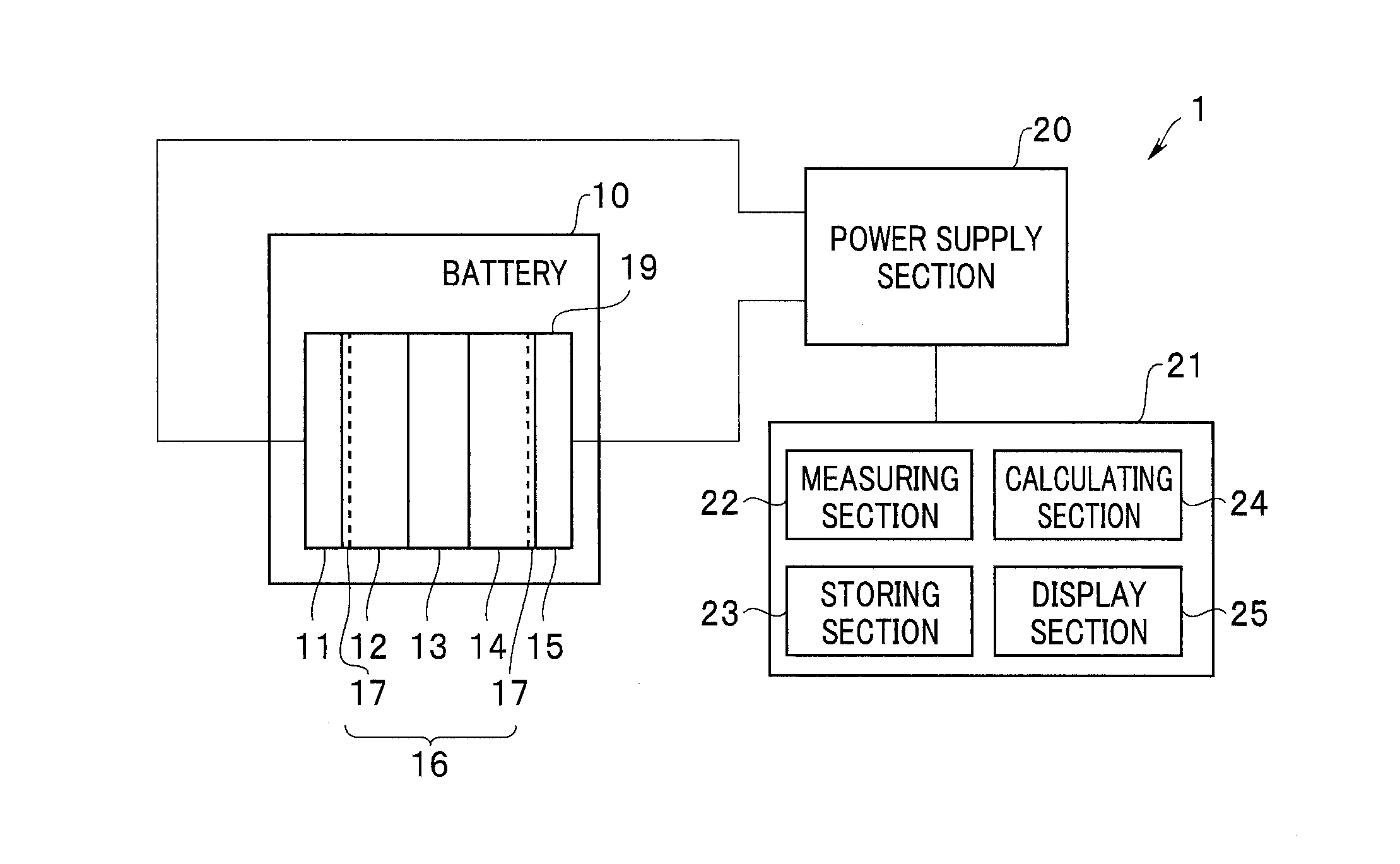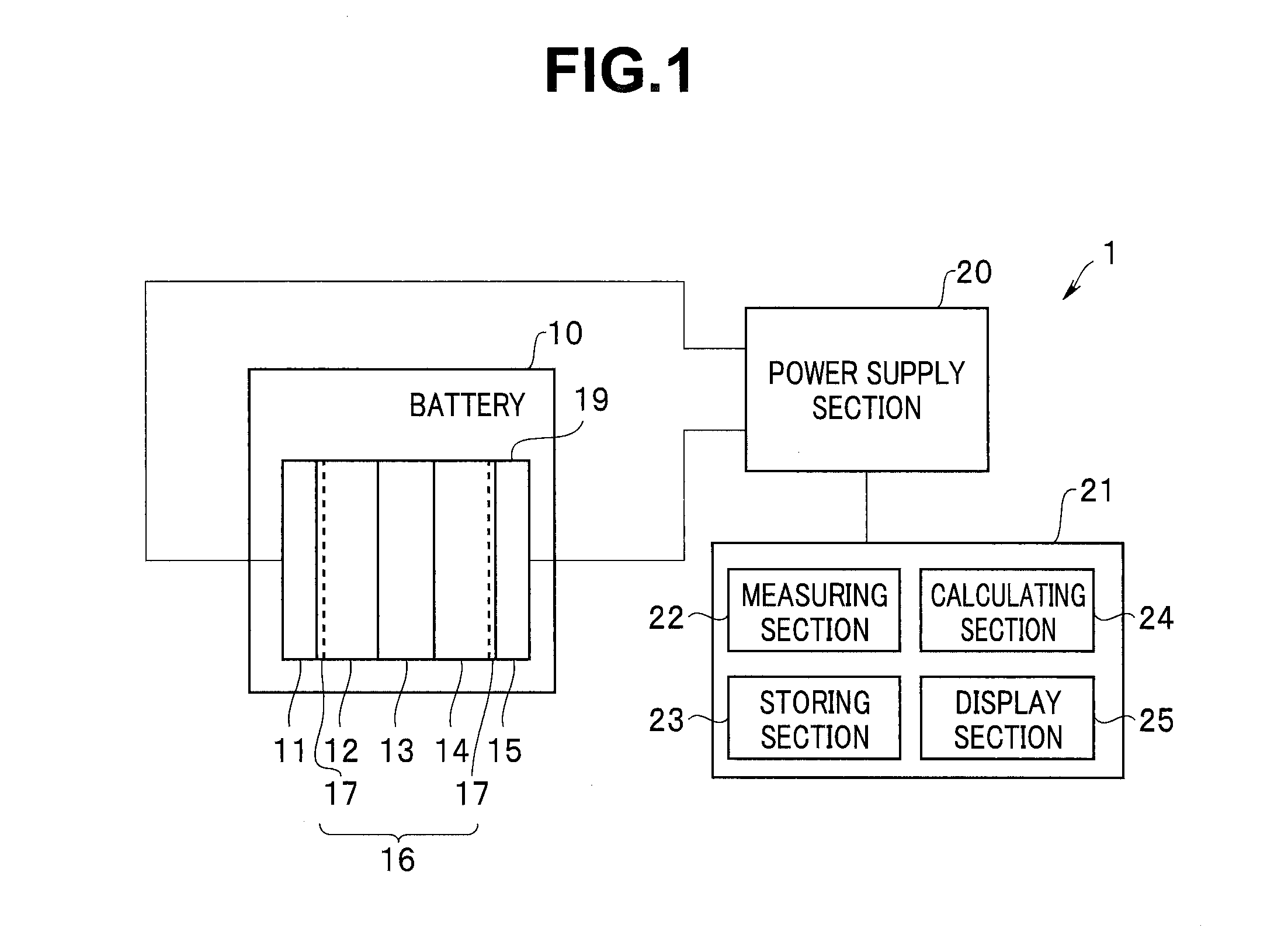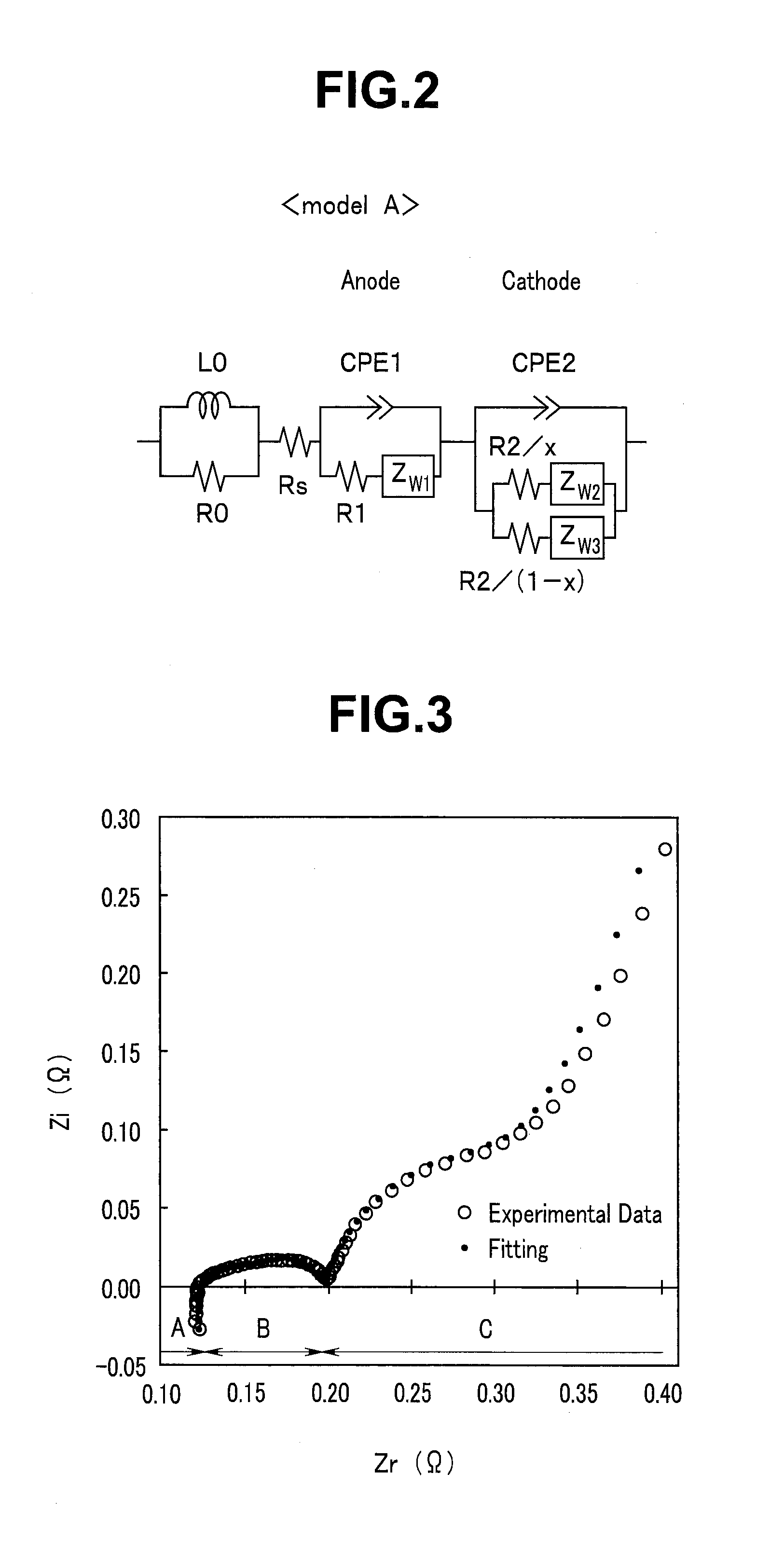Battery system and evaluation method for battery
a battery and battery technology, applied in secondary battery servicing/maintenance, instruments, electrochemical generators, etc., can solve the problems of complex characteristic mechanism of secondary batteries and difficulty for users to accurately learn
- Summary
- Abstract
- Description
- Claims
- Application Information
AI Technical Summary
Benefits of technology
Problems solved by technology
Method used
Image
Examples
first embodiment
Configuration of Battery System
[0022]As shown in FIG. 1, a battery system 1 in a first embodiment includes a lithium ion secondary battery (hereinafter referred to as “battery”) 10, a power supply section 20, and a control section 21. The battery 10 includes a unit cell 19 including a positive electrode 11 for occluding / emitting lithium ions, electrolytes 12 and 14, a separator 13, and a negative electrode 15 for occluding / emitting lithium ions. Note that the battery 10 may include a plurality of the unit cells 19 or may include a plurality of units formed by a plurality unit cells.
[0023]The battery 10 is a lithium ion battery. The positive electrode 11 contains, for example, a lithium-cobalt oxide. The negative electrode 15 contains, for example, a carbon material. The separator 13 is formed of, for example, polyolefin. The electrolytes 12 and 14 are, for example, electrolytes obtained by dissolving LiPF6 in cyclic or chain carbonate. Note that the battery 10 may have a structure i...
second embodiment
[0073]A battery system 1A in a second embodiment is explained. Since the battery system 1A is similar to the battery system 1, the same components are denoted by the same reference numerals and signs and explanation of the components is omitted.
[0074]As shown in FIG. 11, the battery system 1A includes a cooling section 60 configured to cool a temperature of the battery 10 and a temperature measuring section 70. The battery system 1A performs impedance measurement of the battery 10 in a cooled state. A cooling temperature is preferably equal to or lower than 0° C. and particularly preferably equal to or lower than −20° C. A lower limit of the cooling temperature is not particularly specified. However, the lower limit is, for example, −30° C., which is a lower limit in battery specifications.
[0075]In FIG. 12, impedance measurement results (Cole-Cole plots) of the battery 10 not used yet at 25° C., 0° C., and −20° C. are shown. The battery 10 not used yet, that is, at a start of use ha...
PUM
| Property | Measurement | Unit |
|---|---|---|
| frequency | aaaaa | aaaaa |
| frequency | aaaaa | aaaaa |
| temperature | aaaaa | aaaaa |
Abstract
Description
Claims
Application Information
 Login to View More
Login to View More - R&D
- Intellectual Property
- Life Sciences
- Materials
- Tech Scout
- Unparalleled Data Quality
- Higher Quality Content
- 60% Fewer Hallucinations
Browse by: Latest US Patents, China's latest patents, Technical Efficacy Thesaurus, Application Domain, Technology Topic, Popular Technical Reports.
© 2025 PatSnap. All rights reserved.Legal|Privacy policy|Modern Slavery Act Transparency Statement|Sitemap|About US| Contact US: help@patsnap.com



